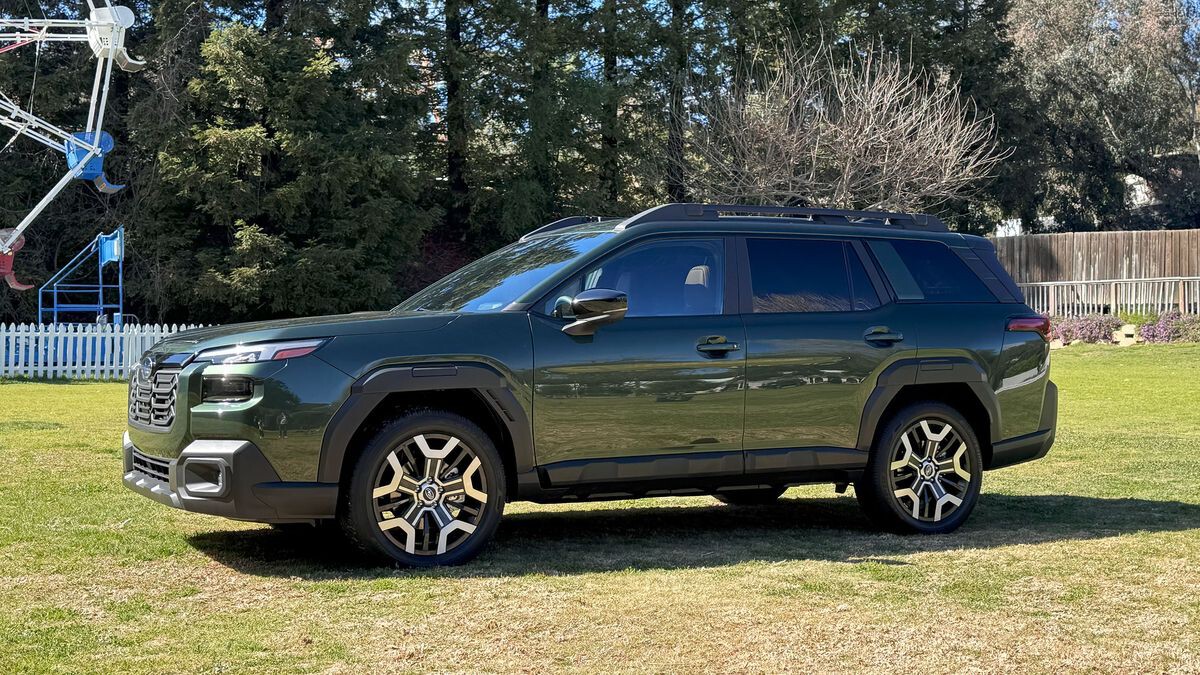In the world of automobiles, it’s often the small details that make a big difference in everyday driving comfort and convenience. Among these details, the glove box—a seemingly simple compartment—plays a surprisingly important role in the user experience inside a vehicle.
Though it may be overlooked in the grand scheme of engine specs, safety ratings, and exterior styling, the glove box is a functional element that drivers interact with regularly.
It serves as a storage space for important documents like registration and insurance papers, manuals, sunglasses, maps, and sometimes even personal items such as snacks or gadgets. For many drivers, the glove box is the go-to compartment for quick access to these essentials.
However, not all glove boxes are created equal. Some are designed and built to last, remaining sturdy and functional over years of use, while others become sources of frustration due to jamming, breaking, or failing to open or close properly.
The longevity and reliability of a glove box might sound like a minor detail in the vast landscape of automotive design, but it reveals much about a vehicle’s overall build quality and engineering priorities. A well-designed glove box incorporates durable materials, precise manufacturing tolerances, and robust mechanical components like hinges and latches that can withstand daily use without faltering.
This reflects a manufacturer’s commitment to user experience and durability, extending beyond the engine and chassis to the finer points of the vehicle’s interior. Conversely, glove boxes that frequently jam or break highlight design shortcomings, cost-cutting measures, or a lack of consideration for long-term usability.
For drivers, this can translate into a nuisance that detracts from the joy of owning and using a vehicle. Imagine needing to wrestle with a glove box every time you want to grab your insurance card or having it snap off completely — these issues create unnecessary hassle and diminish the perceived quality of the car.
In this article, we delve into the realm of glove boxes, exploring five cars known for having glove boxes that stand the test of time without breaking, and five models notorious for having glove boxes that jam or fail regularly. The selections are based on common owner experiences, reliability reports, and design characteristics that influence how well these compartments perform over time.
On the positive side, vehicles like the Toyota Camry and Honda Accord exemplify how thoughtful design and quality materials result in glove boxes that remain reliable and easy to use. On the other hand, models such as the Jeep Wrangler (older versions) and Nissan Altima (early 2010s) showcase the pitfalls of glove box designs that often fall short of user expectations, leading to jams, breakage, and overall frustration.
Understanding these differences helps consumers make more informed decisions when shopping for a vehicle, especially if interior durability and everyday functionality are priorities.
Furthermore, this exploration sheds light on a somewhat neglected aspect of automotive design, inviting manufacturers to pay more attention to components that, while small, have an outsized impact on driver satisfaction.
Whether you’re an enthusiast who appreciates detailed vehicle design or a casual driver simply looking for a hassle-free car experience, recognizing which vehicles offer durable glove boxes and which don’t can save you time, money, and aggravation down the road.
Also Read: 5 Engines That Stay Smooth After 200K Miles and 5 That Knock Before 80K
5 Cars With Glove Boxes That Don’t Break

1. Toyota Camry
The Toyota Camry is widely recognized for its reputation of reliability, and this extends well beyond the engine and drivetrain to the finer details, such as the glove box. The design philosophy behind the Camry’s interior emphasizes practicality and longevity, ensuring that frequently used components like the glove box are built to withstand daily wear and tear.
The materials selected for the Camry’s glove compartment include high-quality, impact-resistant plastics that can endure repeated opening and closing cycles without cracking or warping, which is a common problem in lesser vehicles.
This robustness is particularly important in climates where temperature fluctuations can cause inferior plastics to become brittle over time. In the Camry, these issues are mitigated by material science choices aimed at durability.
Mechanically, the hinge and latch system of the Camry’s glove box is engineered for smooth and consistent operation. Unlike many vehicles where the latch can feel flimsy or prone to jamming, the Camry’s latch mechanism offers a firm, yet effortless, engagement.
The hinge design includes reinforced metal pins or durable plastic composites that reduce wobble and stress on the pivot points. This prevents the glove box door from sagging or becoming misaligned, which are typical causes of breakage or jamming in other models.
Users frequently report that the glove box maintains its original fit and feel even after many years of ownership, which speaks volumes about Toyota’s quality control.
Another factor contributing to the Camry glove box’s durability is the precise fitment within the dashboard. The glove box is designed to sit flush with surrounding panels, minimizing movement that could cause wear on the hinges or latch. This flush fit also reduces the risk of dirt, dust, or debris getting into the latch mechanism, which can cause it to jam over time.
Moreover, the interior engineering incorporates smooth edges and a soft-close mechanism in newer models, making the user experience seamless and reducing abrupt impacts on the door’s components. Toyota’s attention to these design details demonstrates a holistic approach to vehicle interior longevity.
Lastly, the Camry’s glove box is spacious and thoughtfully designed for practical everyday use. It provides ample storage for documents, manuals, and personal items without compromising accessibility or durability. The interior lining and compartment shape ensure that stored items do not put excessive pressure on the door or latch, further preventing premature wear.
From family sedans to fleet vehicles, the Camry’s glove box has stood the test of time, proving that durability and functionality can coexist in a well-engineered automotive interior.

2. Honda Accord
Honda’s Accord has been a benchmark for mid-size sedans for decades, and one of its lesser-celebrated yet crucial strengths lies in the quality of its interior components, such as the glove box. Honda’s commitment to durability is evident in the materials used for the glove compartment, which include robust polymers selected to resist cracking, discoloration, and deformation over time.
The glove box assembly is designed to endure the constant motion and mechanical stress inherent in frequent opening and closing, which is an important consideration for busy drivers who rely on quick access to their stored items.
The use of reinforced plastics in the hinges and latch housing enhances the strength without adding unnecessary weight, striking an ideal balance between durability and cost-efficiency.
The hinge and latch mechanisms of the Accord’s glove box are engineered with precision to maintain smooth operation under heavy use. Unlike glove boxes in less reliable cars, the Accord’s latch does not feel fragile or prone to jamming.
Instead, it offers a reassuring tactile feedback when opened or closed, thanks to well-designed springs and catch points that secure the door tightly yet allow effortless release.
The hinge system incorporates metal reinforcements or high-strength plastic bearings that prevent sagging and ensure alignment remains intact over many years. This engineering excellence contributes to fewer maintenance issues and a better user experience.
Design-wise, the glove box fits snugly within the Accord’s dashboard layout, contributing to its longevity. The flush design prevents unwanted movement that could lead to rattling or damage. The compartment’s dimensions and shape are optimized so that users don’t have to force the door open or closed, reducing the mechanical strain that often leads to breakage in other models.
Additionally, the interior edges of the glove box are smooth and well-finished, preventing damage to both the compartment and the items stored within. These design considerations reflect Honda’s attention to detail and its desire to create components that last well beyond the initial ownership period.
Finally, many Accord owners appreciate the glove box for its combination of durability and usability. The compartment is not just a storage space but also a thoughtfully crafted element of the vehicle’s interior environment. Its ability to resist wear and mechanical failures means it rarely becomes a source of frustration, even after years of daily use.
The long-lasting performance of the glove box is consistent with Honda’s reputation for producing vehicles that prioritize quality and driver satisfaction across every facet of their design.

3. Subaru Outback
The Subaru Outback, designed for adventurous lifestyles and rugged conditions, extends its reputation for durability to its interior features, including the glove box. Built to withstand diverse environments — from icy mountain roads to hot desert trails — the Outback’s glove compartment uses reinforced materials engineered to resist cracking and wear, even under extreme conditions.
The plastic composites employed are designed to retain flexibility, preventing brittleness caused by temperature fluctuations or UV exposure. This attention to material resilience ensures the glove box door maintains its structural integrity, even in harsh outdoor climates typical of Subaru’s customer base.
The mechanics of the Outback’s glove box also reflect Subaru’s commitment to reliability. The hinges are reinforced with metal or composite materials that prevent loosening and wear, and the latch system is designed for smooth, secure engagement. The latch mechanism employs durable springs and catch points that resist sticking or jamming, common issues in other vehicles’ glove compartments.
Importantly, Subaru incorporates a limiting arm or stop on the glove box hinge to prevent it from opening too far, which reduces strain on the hinges and prolongs their lifespan. This feature is a clear example of thoughtful engineering aimed at enhancing durability.
The design of the glove box also prioritizes ease of use. The compartment opens wide enough for users to access stored items without awkward maneuvering or excessive force. The interior is roomy, with a shape that accommodates a variety of items securely.
Additionally, the glove box door sits flush within the dashboard, ensuring that it does not rattle or become misaligned. The seamless fit and finish help reduce exposure to dust and dirt, which can interfere with the latch mechanism. Subaru’s emphasis on functionality and robustness makes the Outback’s glove box a reliable feature that complements its rugged reputation.
Lastly, Subaru owners frequently report the glove box as a low-maintenance part of their vehicle, with very few issues over the life of the car. This durability is especially valuable for those who use their Outback in demanding environments, where vehicle reliability extends beyond just the drivetrain to every component.
The glove box’s ability to withstand heavy use, rough conditions, and environmental stress without failing or jamming contributes to Subaru’s overall image as a maker of durable, adventure-ready vehicles.

4. Ford F-150
As one of the most popular pickup trucks in the United States, the Ford F-150 is built with a focus on toughness and practicality, and its glove box design mirrors these values. The F-150’s glove compartment is constructed from heavy-duty materials designed to endure the kind of rough usage common on work sites, farms, and outdoor activities.
The plastics used are thicker and often reinforced with metal or additional composites in higher trims, preventing the common cracking or warping issues seen in lighter-duty cars. This robustness is essential given that the F-150’s glove box is often subjected to more stress due to the heavy tools, documents, and personal gear that owners store inside.
Mechanically, the F-150’s glove box features a sturdy latch system engineered to hold up under significant use. The latch is designed to offer a firm grip and secure closure, preventing the door from popping open on rough roads or when the truck bed is loaded.
The hinge system is robust, often featuring metal pins or brackets that withstand vibrations and impacts without loosening. The design also includes features to minimize rattling, which is critical in pickup trucks where road noise and cabin vibrations can be more pronounced. Drivers appreciate the reliable feel of the glove box, noting that it remains solid and functional over many years.
From a design perspective, the F-150 glove box is spacious, reflecting the truck’s utilitarian ethos. It provides ample room for important documents, tools, and even larger items that wouldn’t fit in a typical sedan glove box. The compartment’s door is designed for easy access, opening wide without strain, and closing securely with a positive latch click.
This balance between functionality and durability is a key selling point for the F-150’s interior. Furthermore, the glove box fits flush within the dashboard, minimizing potential damage from rough handling or impacts inside the cab.
Owners consistently report the F-150’s glove box as a component that “just works” even under demanding conditions, which is essential for a vehicle designed for heavy-duty use.
Unlike many trucks, where interior components can feel like afterthoughts, the F-150 offers a glove box that supports the vehicle’s overall reputation for durability and reliability. This component plays a crucial role in the day-to-day practicality of the truck, helping maintain the owner’s trust in the vehicle’s build quality.

5. Lexus RX
Lexus, as a luxury brand, combines premium materials with meticulous engineering, and the RX exemplifies this in its glove box design. Unlike more utilitarian glove compartments, the RX’s glove box offers an elegant, quiet, and smooth user experience that aligns with Lexus’s reputation for luxury and refinement.
The materials used include soft-touch plastics, leather accents in some trims, and high-quality polymers that resist wear and tear. This combination ensures that the glove box not only looks good but also lasts for years without issues like cracking, fading, or breaking. Lexus’s approach to interior components focuses on both aesthetics and longevity, making the glove box a highlight rather than an afterthought.
The mechanical engineering behind the RX’s glove box is equally impressive. The latch mechanism is designed for whisper-quiet operation, often employing damped latches that close softly without slamming or rattling. The hinge design incorporates high-strength metal or composite materials to maintain perfect alignment, preventing sagging or misfitting that could cause jams.
This attention to detail means that the glove box feels precise and durable every time it is used. Lexus extensively tests these mechanisms to ensure they perform flawlessly across thousands of cycles, giving owners peace of mind that the glove box will remain reliable over time.
From a design standpoint, the RX glove box fits seamlessly into the cabin’s overall luxurious aesthetic. The door sits flush with the dashboard and often features ambient lighting inside the compartment, adding both utility and style. The interior lining protects stored items and reduces noise, further enhancing the premium feel.
The compartment is also designed with generous space for documents and personal effects, maintaining practical usability alongside luxury. The meticulous craftsmanship and thoughtful design elements elevate the glove box from a mere storage space to a signature component of the RX’s interior.
Owners of the Lexus RX frequently praise the glove box for its combination of function, durability, and refinement. It rarely suffers from the common issues seen in lower-priced vehicles, such as jamming, cracking, or rattling. Instead, the RX glove box exemplifies Lexus’s commitment to building interiors that not only last but also contribute positively to the driving experience.
For those seeking a luxury SUV with dependable interior features, the RX’s glove box stands out as a testament to what careful design and quality materials can achieve.
5 Cars With Glove Boxes That Constantly Jam

1. Jeep Wrangler (Older Models)
The Jeep Wrangler is an iconic vehicle, known primarily for its off-road prowess and rugged build. However, when it comes to the interior components, such as the glove box, especially in older models, it has often been a source of frustration for owners.
The glove box latch and hinge mechanisms in these vehicles were frequently constructed from lower-quality plastics and basic designs that could not withstand the rigors of daily use or exposure to the elements.
Given that many Wranglers see rough treatment off-road — including dust, mud, vibrations, and temperature extremes — the glove box is subjected to conditions that exacerbate its mechanical vulnerabilities. This can lead to warping, misalignment, and eventual jamming.
Mechanically, the glove box latch in older Wranglers tends to be a weak point. The latch system is often prone to becoming sticky or completely failing due to a combination of plastic degradation and accumulation of dirt or debris. The hinges, usually simple plastic pins, tend to snap or loosen after repeated use or when subjected to the constant vibrations typical in off-road driving.
These failures make the glove box difficult to open, forcing owners to exert excessive force or use improvised methods to access the compartment. Over time, the repeated stress can cause the entire assembly to break down, requiring either a replacement or a custom fix.
Design-wise, the glove box in the older Wrangler models was not optimized for smooth operation or long-term durability. The compartment’s fit within the dashboard can become uneven due to body flexing or wear, which further contributes to jamming issues.
Moreover, the latch mechanisms often lack the refinement found in other vehicles, with rough edges or poor alignment that create snag points. This results in a glove box door that may stick partially open or closed, causing rattles or vibrations that degrade the user experience. For Jeep enthusiasts, this trade-off is often accepted as part of the vehicle’s rugged charm, but it remains a common complaint.
Owners who have faced glove box issues in older Wranglers often resort to aftermarket modifications or repairs. Common fixes include reinforcing the hinges with metal pins, replacing plastic latches with sturdier components, or even removing the glove box door entirely in extreme cases.
While these solutions can restore functionality, they also underscore a design weakness that many drivers would prefer to avoid. Jeep’s focus on off-road capability sometimes came at the expense of interior durability, making the glove box a notorious example of where rough utility overshadowed refinement.

2. Nissan Altima (Early 2010s Models)
The Nissan Altima from the early 2010s, while a competent and popular sedan, suffers from some notable interior design flaws, with the glove box being one of the most frequently criticized components. Owners have reported that the glove box latch and hinge system in these models are particularly prone to jamming or breaking under normal use.
The latch mechanism is often made of thin, brittle plastic that can crack after relatively little stress, and the hinges tend to loosen or misalign, resulting in a glove box door that won’t open smoothly or close securely.
From a mechanical standpoint, the latch system used in these Altimas is overly susceptible to wear. The plastic components within the latch can develop small fractures over time, weakening the overall structure.
When this happens, the latch may catch or fail to release properly, leading to a glove box that jams shut or is stuck partially open. The hinge pins can also become loose, causing the door to sag or misalign, which compounds the jamming problem by creating friction points where the door binds against the dashboard frame.
Design-wise, the glove box compartment in the early 2010s Altima was constructed with cost-saving measures that sacrificed durability for affordability. The compartment door lacks reinforcement, making it prone to bending under pressure, especially when owners store heavier items inside.
This bending further exacerbates misalignment and jamming issues. Additionally, the interior fitment tolerances are not tight enough to prevent dust and debris from infiltrating the latch mechanism, which can cause it to stick. Many users have reported frustration at needing to use awkward hand positions or tools just to open the glove box, turning a simple task into a hassle.
Repair options for these glove boxes often involve replacing the entire latch mechanism or hinges, which can be time-consuming and somewhat expensive for an otherwise budget-friendly sedan. Some owners attempt DIY fixes using lubricant sprays or makeshift hinge reinforcements, but these solutions only provide temporary relief.
The persistent issues with the Altima glove box reflect a broader challenge Nissan faced during this generation — balancing cost efficiency with long-term reliability — and highlight an interior design element that consistently fails to meet owner expectations.

3. Volkswagen Jetta (Mk5 and Mk6)
Volkswagen’s Jetta models from the Mk5 and Mk6 generations have earned a reputation for having one of the more problematic glove boxes on the market. Owners frequently report that the glove box latch is prone to sticking and jamming, making it frustratingly difficult to open or close without applying excessive force.
The root of the problem lies in the combination of cheaper plastic components used in the latch mechanism and a hinge design that does not adequately reinforce the door’s pivot points. These flaws lead to frequent misalignment and eventual mechanical failure.
Mechanically, the Jetta’s glove box latch uses a small plastic catch that wears down quickly due to the forces involved in regular use. As the plastic wears, the latch loses its precision, causing the glove box door to stick or fail to latch securely. The hinges, also composed largely of plastic, can become loose or brittle, further compromising the door’s ability to open smoothly.
This often results in a glove box door that rattles while driving or jams when trying to open it. Owners commonly report having to jiggle or push the door repeatedly to get it to function properly.
Design aspects exacerbate these mechanical weaknesses. The glove box in these Jetta models sits within a tight dashboard cavity that, when combined with poor latch alignment, creates friction points that catch the door during operation.
Additionally, the plastic molding around the latch sometimes has rough edges or burrs, which snag on the door mechanism. The glove box door itself is not reinforced adequately, making it susceptible to slight warping or bending over time, which further compounds jamming problems. The combination of these issues makes this glove box a notorious weak link in an otherwise well-engineered car.
Owners often resort to aftermarket parts or repair kits to address these issues, replacing the latch with more robust components or reinforcing the hinges with metal supports. While these fixes can improve functionality, they are rarely perfect solutions and add maintenance complexity. The persistent glove box problems in these Jetta generations detract from the overall ownership experience and remain a sore spot for Volkswagen fans hoping for an otherwise solid compact sedan.

4. Chevrolet Malibu (Late 2000s to Early 2010s)
The Chevrolet Malibu models from the late 2000s to early 2010s have a glove box assembly that many owners find problematic. The latch and hinge components are often criticized for their fragility, leading to glove boxes that jam frequently or become impossible to open without force.
The plastics used in the latch mechanism are thin and prone to cracking under pressure or stress from stored items. Additionally, the hinges can loosen or deform over time, causing misalignment that leads to the glove box door binding against the dashboard.
From a mechanical viewpoint, the latch mechanism in these Malibus is not robust enough to handle regular use, especially in vehicles that see heavy daily driving. The latch tends to develop stress fractures, especially if the glove box is overloaded or handled roughly.
The hinge pins, often made of plastic or weak metals, can wear down or break, leading to a glove box door that sags or refuses to close properly. This failure mode often causes owners to struggle when trying to open the glove box, sometimes needing to push or pry it with excessive force.
The design of the glove box compartment contributes to its jamming issues. The compartment is relatively shallow and narrow, which can lead to overstuffing and increased stress on the latch and hinges. This overuse results in accelerated wear and damage to the mechanical components.
The fitment of the glove box door is also less than ideal, with gaps that allow dirt and debris to accumulate around the latch, causing it to stick or jam over time. The lack of reinforcement in the door design makes it vulnerable to bending, further worsening alignment issues.
Repairing these glove boxes often means replacing the entire latch assembly or hinges, which can be a costly and inconvenient process for owners. Some resort to makeshift fixes such as using lubricant sprays or reinforcing parts with glue or tape, but these are short-term solutions at best.
The glove box problems in these Malibu models are a recurring complaint, often cited alongside other interior quality concerns that detract from the car’s overall appeal.

5. Fiat 500
The Fiat 500 is praised for its compact design and style, but is often criticized for practicality issues, especially with interior components like the glove box. The glove compartment in early Fiat 500 models is small and built with lightweight materials that prioritize aesthetics over durability.
The latch mechanism and hinges are frequently cited as weak points, with reports of plastic latches cracking and hinges becoming loose or misaligned. The combination of these factors leads to glove boxes that jam, stick, or fail to close properly, frustrating owners who expect at least basic functionality.
Mechanically, the Fiat 500’s glove box latch is prone to breakage due to the small size and low durability of the plastic parts involved. The latch tends to misalign easily, especially when the glove box is opened and closed repeatedly.
Hinges are also under-engineered, leading to sagging or binding that causes the door to stick. The plastic material becomes brittle over time, especially with exposure to heat and UV light, causing cracking and further mechanical failures. These issues make accessing the glove box a daily challenge rather than a convenience.
From a design perspective, the glove box in the Fiat 500 sacrifices practicality for style. Its small size limits what can be stored, which leads some owners to force larger items inside, accelerating wear and causing misalignment.
The fitment within the dashboard is not as tight or flush as in other vehicles, allowing dust and debris to enter the latch area and exacerbate jamming. The door itself can warp or flex, further complicating operation. These design trade-offs highlight the challenges Fiat faced in balancing the vehicle’s iconic look with everyday usability.
Owners often find themselves needing to carefully handle the glove box to prevent jams or breaks and, when problems arise, are faced with repair or replacement that can be complicated by the glove box’s intricate mounting within the small dashboard space. While the Fiat 500 shines in many areas, its glove box remains a frustrating weak point that detracts from the overall ownership experience.
Also Read: 5 Trucks With Bulletproof Engine Mounts and 5 That Constantly Fail
The glove box, despite its modest size and seemingly minor role in a vehicle’s interior, is a critical component that influences the overall ownership experience. From storing vital documents to housing everyday essentials, it acts as a personal vault within the car’s cabin.
Through this deep dive into the world of glove boxes, we’ve seen how a simple compartment can either elevate a vehicle’s usability or become a persistent source of irritation. The contrast between glove boxes that don’t break and those that constantly jam reveals not just a difference in component quality, but a broader reflection of automotive design priorities and manufacturing standards.
Vehicles like the Toyota Camry, Honda Accord, Subaru Outback, Ford F-150, and Lexus RX showcase what happens when manufacturers prioritize durability and precision engineering in every facet of their cars, right down to the smallest compartments.
These glove boxes are built with reinforced materials, well-designed hinges, and robust latch mechanisms that resist wear and mechanical failure over the years of use. Their design incorporates smooth operation, thoughtful fitment, and resilience against environmental factors such as temperature extremes and vibrations.
As a result, owners of these vehicles enjoy hassle-free access to their glove boxes, contributing positively to their overall satisfaction with the car. These examples underscore how attention to detail and quality materials can transform an often-overlooked feature into a testament of reliability and driver convenience.
Conversely, models like the Jeep Wrangler (older versions), Nissan Altima (early 2010s), Volkswagen Jetta (Mk5 and Mk6), Chevrolet Malibu (late 2000s to early 2010s), and Fiat 500 illustrate the consequences of neglecting this small yet essential component.
Whether due to the use of brittle plastics, poorly engineered latch mechanisms, or inadequate reinforcement, these glove boxes frequently jam, break, or require forceful manipulation to open and close.
Such problems not only cause frustration but also hint at compromises made elsewhere in the vehicle’s design process, often in the name of cost-cutting or prioritizing other features. For owners, these persistent issues translate to inconvenience and sometimes costly repairs. More importantly, they diminish the perceived quality of the vehicle’s interior, which can affect resale value and brand reputation.
Recognizing the importance of glove box durability also emphasizes the value of comprehensive vehicle evaluation beyond the obvious metrics of performance and styling. For car buyers, paying attention to details like glove box quality, door fitment, and latch reliability can help avoid annoying maintenance headaches and enhance everyday convenience.
For manufacturers, this analysis is a reminder that every element of a vehicle, no matter how small, contributes to the holistic driving experience. Improving these small components can foster greater customer loyalty and brand prestige.
Ultimately, the glove box is a microcosm of the broader engineering challenges automakers face: balancing cost, durability, functionality, and design. While it may not be the first feature considered when choosing a car, its impact on daily life is undeniable.
With proper attention and design care, glove boxes can be a point of pride rather than frustration, reflecting a vehicle’s overall commitment to quality. Whether you prioritize rugged durability or refined luxury, understanding which cars offer reliable glove boxes can make your driving experience smoother, more convenient, and far less aggravating.

